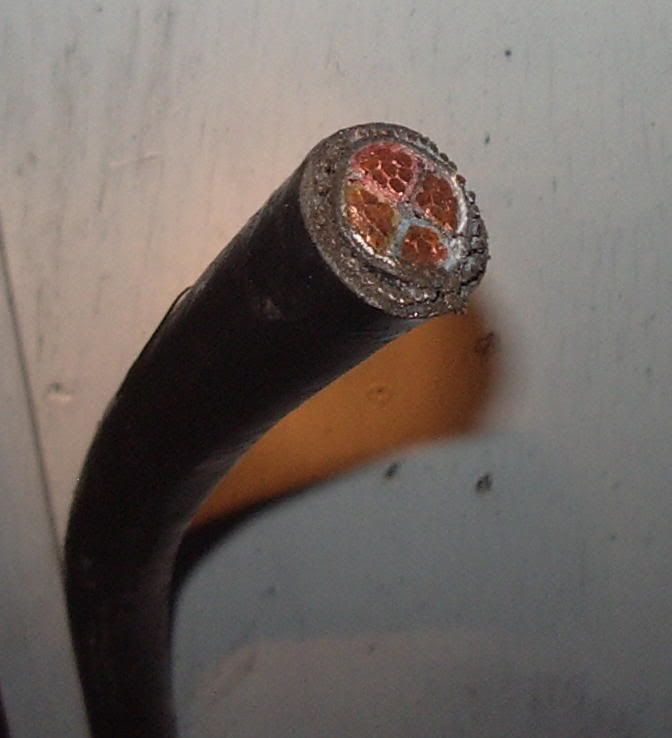Fortunately there was a powercut at work the other day.  We got to shut up shop for 2 hours.
We got to shut up shop for 2 hours.  When they dug the road up, they found a single phase tee-joint had blown up, causing one phase to cut out. The other 2 phases continued working, much to the distress of our main 3-phase fridge compressor, which tried to carry on working.
When they dug the road up, they found a single phase tee-joint had blown up, causing one phase to cut out. The other 2 phases continued working, much to the distress of our main 3-phase fridge compressor, which tried to carry on working. 
We were lucky - the phase that blew out only poweres a couple of fridges and 2 rows of lights. So glad it wasnt the phase that controls all the lighting contactors! This phase was off from 7:30pm to 12 midday, so this would have been disastrous for us!
This phase was off from 7:30pm to 12 midday, so this would have been disastrous for us!
When the power came back on, it flickered on, a phase at a time. The final underground repair connection was made live Surely there would be a lot of arcing, reconnecting a loaded wire like this (hence the flickering?). How would the power have been cut, so the repair could be carried out in the first place? Or do they just cut the damaged cable out under load?
Surely there would be a lot of arcing, reconnecting a loaded wire like this (hence the flickering?). How would the power have been cut, so the repair could be carried out in the first place? Or do they just cut the damaged cable out under load?  What sort of PPE do these guys have for this sort of work?
What sort of PPE do these guys have for this sort of work?
Also, I saw the cable they used to make the join underground, it was 3 core (maybe 4 core) with an outer sheath IIRC, and the cores were triangular. What is this cable known as? Would this have been aluminium cores? (its worth a mention here that our shop has a 3 phase TNS supply, though it may be TNCS, its not very clear looking at the cutout)
Any DNO or ex-DNO guys hereabouts?
Just curious!
We were lucky - the phase that blew out only poweres a couple of fridges and 2 rows of lights. So glad it wasnt the phase that controls all the lighting contactors!
When the power came back on, it flickered on, a phase at a time. The final underground repair connection was made live
Also, I saw the cable they used to make the join underground, it was 3 core (maybe 4 core) with an outer sheath IIRC, and the cores were triangular. What is this cable known as? Would this have been aluminium cores? (its worth a mention here that our shop has a 3 phase TNS supply, though it may be TNCS, its not very clear looking at the cutout)
Any DNO or ex-DNO guys hereabouts?
Just curious!



